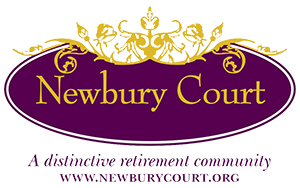Search
November 1, 2019, First Parish, Sudbury
November 2, 2019, Emmanuel Church, Boston
Adagio in E Major for violin and piano Fanny Hensel Mendelssohn (1805-1847)
Sonata in D Major, op. 1 for piano and flute Sophia Corri Dussek (1775-1831)
Allegro
Larghetto sostenuto
Rondo (Vivace grazioso)
Piano Trio in E Minor, op. 2, no. 3 Jan Ladislav Dussek (1760-1812)
Poco presto
Rondo (Allegretto moderato)
Intermission
Piano Trio no. 1 in D Minor, op. 49 Felix Mendelssohn (1809-1847)
Molto Allegro agitato
Andante con moto tranquillo
Scherzo (Leggiero e vivace)
Finale (Allegro assai appassionato)
Suzanne Stumpf, flute; Sarah Darling, violin
Daniel Ryan, cello; Michael Bahmann, piano
old system multi-keyed flute by an anonymous Viennese maker, c. 1815
violin attributed to Edward Pamphilon, 1677, restored by Andrew Dipper
cello by an anonymous Belgian maker, c. 1700
piano by Ernst Rosenkranz, Dresden, c. 1835
Program Notes
Prior to Edison’s invention of the phonograph in 1877, if one wanted to enjoy music at home, the only options were to make it oneself or engage others to do so. Thus, it is not surprising that developing facility in playing musical instruments or singing was more common in earlier centuries than it is today. This program spotlights four fascinating composers from two prominent musical families: siblings Fanny and Felix Mendelssohn and spouses Jan Ladislav and Sophia Corri Dussek.
Fanny and Felix Mendelssohn’s musical education had begun by 1816 with piano lessons from their mother Lea. Fanny was an excellent pianist and composer who showed prodigious musical ability from an early age. Older than Felix by four years, she was very supportive of his composing, offering him constructive criticism and guidance. Prevailing attitudes about women of the day, unfortunately, discouraged her from pursuing a professional career in music. Her father wrote to her in 1820, “Music will perhaps become his [Felix’s] profession, but for you it can and must be only an ornament.” Her works were performed alongside her brother’s at the well-regarded “Sunday Concerts” that first her parents, then later Fanny, directed at the family home in Berlin. These high-profile house concerts were vital to the launching of Felix’s career early on and remained the only forum for Fanny’s music due to societal constraints placed on women in the upper class. Her Adagio for violin and piano (1823), a work in which the two instruments are equal partners, is an introspective piece that may well have been performed at the “Sunday Concerts.”
In contrast to Fanny, Sophia Corri Dussek was born into a musical family that encouraged her musical career. From a very young age, she studied voice with her father, Domenico Corri, an Italian composer, impresario, and music publisher. In addition to already becoming an acclaimed soprano by her teenage years, she also became an accomplished harpist, pianist, and composer. In 1792, she met her husband-to-be, the renowned traveling piano virtuoso Jan Ladislav Dussek who had recently arrived in London. The two met through their common musical circles and performed together. They married in 1793, but their partnership became rocky after only a few years. Sophia made a failed attempt to leave London with another man. After the publishing business shared by Jan Ladislav and Sophia’s father faltered in 1799, Jan Ladislav fled to Hamburg to avoid debtor’s prison. At about that time, their only child, Olivia, was born. After Jan Ladislav died in 1812, Sophia was able to remarry. She settled in Paddington, establishing a music school and continuing to compose and perform.
In Sophia’s composing, she contributed substantially to harp repertoire. The Sonata in D Major on this program is among her only surviving works for piano. This inventive work shows unfolding Romantic inclinations although it is composed in the older style of “accompanied” sonata, in which the piano is the primary instrument and the flute provides accompaniment.
The life and career of Jan Ladislav Dussek prefigures many of the later Romantic virtuoso pianists. At the age of 19, he traveled from Prague to Holland where his extensive performing as a concert pianist began. Dussek’s musical tours took him to all the major cultural centers in Europe. He is thought to have been the first to place the piano sideways on stage to enable audiences to see the performer’s hands. Along with being one of the most admired pianists at that time, he was a trailblazing composer in the early Romantic style. Dussek’s writing for the piano includes virtuoso figuration, full textures, and frequent modulations, foreshadowing many trends that would later become common for Romantic piano composers. His Piano Trio in E Minor was composed in 1787. Its darkly expressive first movement displays a richness of texture and complexity of figuration. This is contrasted by a wistful rondo which hints at the previous movement’s brooding qualities.
While Fanny Mendelssohn’s compositions were confined mostly to the lied and piano miniatures, Felix’s work encompassed nearly every musical genre of the time, including keyboard, chamber, orchestral, and sacred choral works. His Piano Trio in D Minor was composed in the summer of 1839 in Frankfurt. He performed the work several times in 1839-40, continually revising it. On hearing Felix play it, his close friend, the composer and pianist Ferdinand Hiller, convinced him that the piano part should be rewritten in the more “Romantic” style embodied by Chopin and Liszt. Mendelssohn completed this revised version in early 1840 and oversaw its simultaneous publishing in Germany, France, and England. Its English publisher Ewer also contracted Mendelssohn to transcribe the violin part for flute. In this version, the listener experiences an expanded palette of color and a clarity of voices created by the distinct timbres of wind, string, and keyboard.
—Suzanne Stumpf and Daniel Ryan











Daniel Ryan and Suzanne Stumpf, Artistic Directors
349 Boston Post Road, Weston, MA 02493
tel. (781) 466-6694
All content © Musicians of the Old Post Road
Privacy Policy
Terms & Conditions
